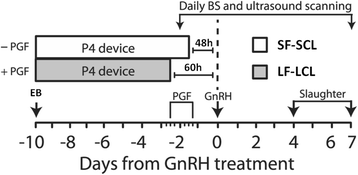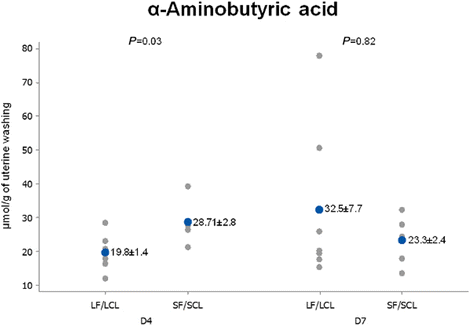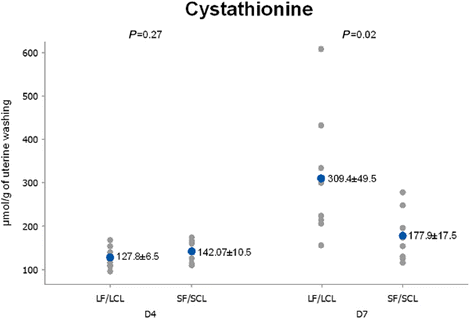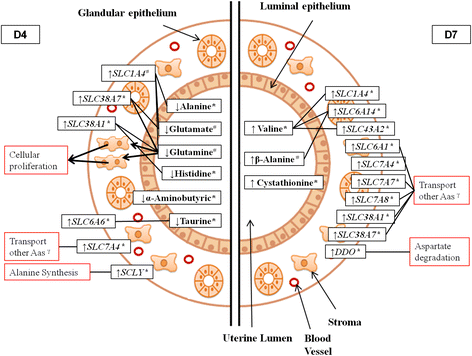Evidence of endometrial amino acid metabolism and transport modulation by peri-ovulatory endocrine profiles driving uterine receptivity
- PMID: 28630707
- PMCID: PMC5472857
- DOI: 10.1186/s40104-017-0185-1
Evidence of endometrial amino acid metabolism and transport modulation by peri-ovulatory endocrine profiles driving uterine receptivity
Abstract
Background: In beef cattle, changes in the periovulatory endocrine milieu are associated with fertility and conceptus growth. A large preovulatory follicle (POF) and the resulting elevated concentrations of progesterone (P4) during diestrus positively affect pregnancy rates. Amino acids (AA) are important components of maternally derived secretions that are crucial for embryonic survival before implantation. The hypothesis is that the size of the POF and the concentration of P4 in early diestrus modulate the endometrial abundance of SLC transcripts related to AA transport and metabolism and subsequently impact luminal concentrations of AA. The follicle growth of Nelore cows was manipulated to produce two experimental groups: large POF and CL (LF-LCL group) and small POF and CL (SF-SCL group). On Day 4 (D4; Experiment 1) and Day 7 (D7; Experiment 2) after GnRH-induced ovulation (GnRH treatment = D0), the animals were slaughtered and uterine tissues and uterine washings were collected. qRT-PCR was used to evaluate the expression levels of AA transporters in D4 and D7 endometrial tissues. The concentrations of AA were quantified in D4 and D7 uterine washings by HPLC.
Results: Transcript results show that, on D4, SLC6A6, SLC7A4, SLC17A5, SLC38A1, SLC38A7 and SCLY and on D7 SLC1A4, SLC6A1, SLC6A14, SLC7A4, SLC7A7, SLC7A8, SLC17A5, SLC38A1, SLC38A7, SLC43A2 and DDO were more abundant in the endometria of cows from the LF-LCL group (P < 0.05). In addition, concentrations of AA in the uterine lumen were influenced by the endocrine profiles of the mother. In this context, D4 uterine washings revealed that greater concentrations of taurine, alanine and α-aminobutyric acid were present in SF-SCL (P < 0.05). In contrast, lower concentrations of valine and cystathionine were quantified on D7 uterine washings from SF-SCL cows (P < 0.05).
Conclusion: The present study revealed an association between the abundance of transcripts related to AA transport and metabolism in the endometrium and specific periovulatory endocrine profiles related to the receptive status of the mother. Such insights suggest that AAs are involved in uterine function to support embryo development.
Keywords: Amino acids; Beef cattle; Sex steroids; Uterus.
Figures







References
LinkOut - more resources
Full Text Sources
Other Literature Sources
Research Materials
Miscellaneous

